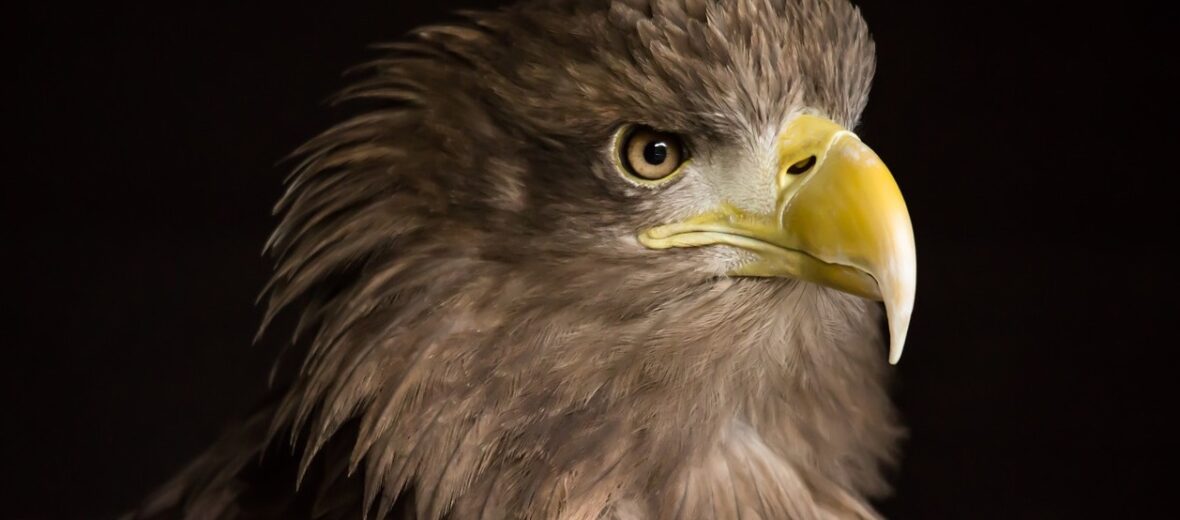
Considered the 4th largest eagle in the world, the white-tailed eagle, aka white-tailed sea eagle, is found across northern Europe and northern Asia. The coastal populations prefer estuaries and coastal marshes, whereas the inland populations like secluded woods and forested areas with tall mature trees. One thing is common though, they all need access to freshwater wetlands like river systems, lakes, and marshes. With an estimated 50,000 species, globally, these eagles are listed as Least Concern by the IUCN. However, they are affected by hunting, trapping, pollution, and habitat loss.
First the Stats…
Scientific name: Haliaeetus albicilla
Weight: Up to 10 lbs.
Length: Up to 3.4 feet
Wingspan: Up to 8 feet
Lifespan: Up to 25 years
Now on to the Facts!
1.) Like other eagles, they are diurnal (active during the day).
2.) While moderately gregarious, these birds are also very territorial and will fight other eagles if they feel their territory or nest are being threatened.
3.) If a fight does break out, it isn’t uncommon for one of the combatants to die as a result of injuries.
4.) Besides fighting, they will communicate vocally. The male call is a gri-gri-gri or krick-krick-krick sound. The female makes a deeper gra-gra-gra-gra or krau-krau-krau-krau sound.
5.) A group of these eagles is called an aerie, a flock, or a convocation.
But wait, there’s more on the white-tailed eagle!
6.) White-tailed eagles spend most of the day perched on crags or trees, and typically won’t move for hours.
7.) They prey on fish, birds, some mammals, and even carrion (dead animals) in winter.
Did you know…?
Nests can average 3.3 feet across and 6.6 feet deep!
8.) White-tails are monogamous (mate for life).
9.) Females lay up to 2 eggs that hatch in approximately 42 days.
10.) Baby eagles are called eaglets. How cute is that?
But wait, there’s still more on the white-tailed eagle!
11.) When white-tailed eagles build a nest, they often build several. They then switch out nests each breeding season.
Did you know…?
Germany’s national bird is the white-tailed eagle.
12.) In true eagle fashion, they will often bully other animals and birds for their catch and steal said food for themselves or their eaglets. This is known as kleptoparasitism.
13.) A Gaelic name for the white-tailed eagle is iolar sùil na grèine or “eagle of the sun’s eye.” So poetic.
14.) When fishing, these eagles tend to stick to water depths of around 3+ feet.
15.) White-tailed eagles are known to prey on about 170 different species of birds. In order to sneak up on their avian prey they will use the sun to blind their prey. If this tactic doesn’t work, they will go after the weak and sick.
Now a Short White-Tailed Eagle Video!
Be sure to share & comment below! Also, check out the Critter Science YouTube channel. Videos added frequently!
Want to suggest a critter for me to write about? Let me know here.



